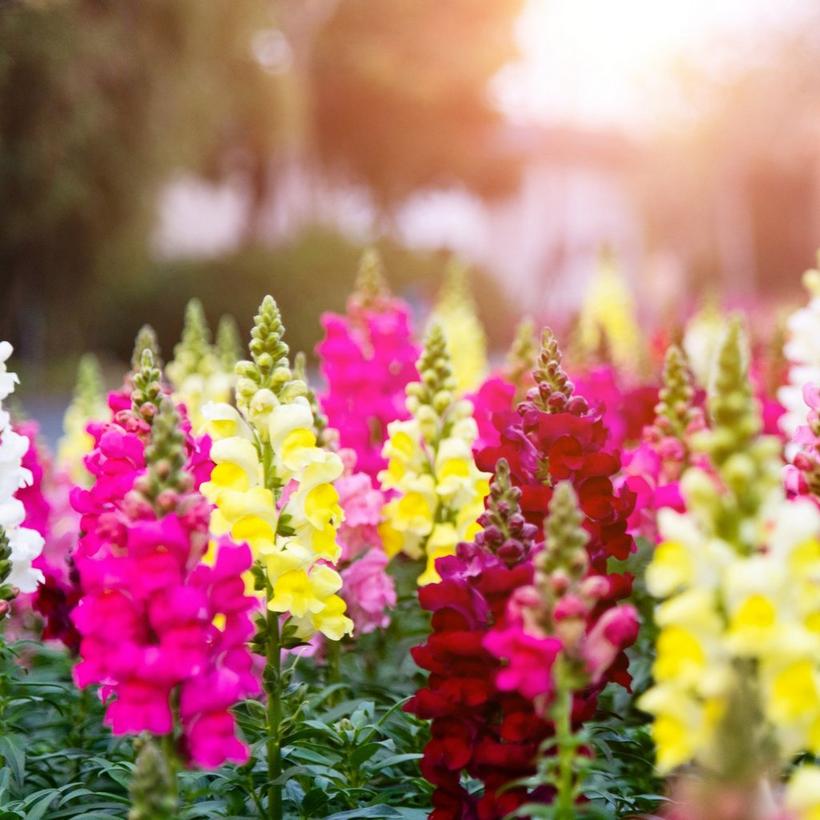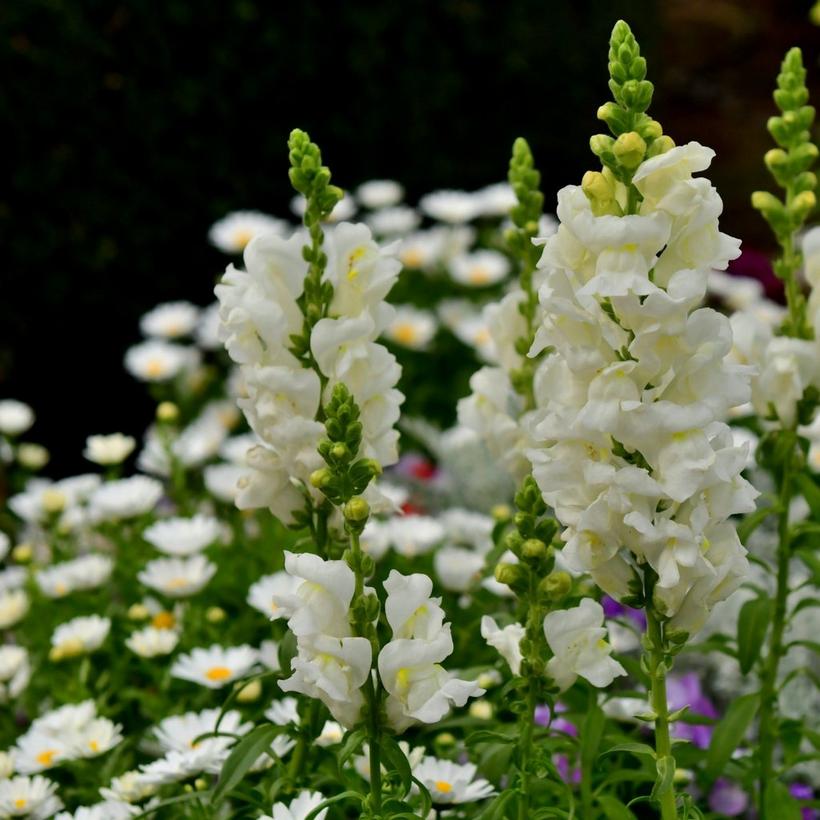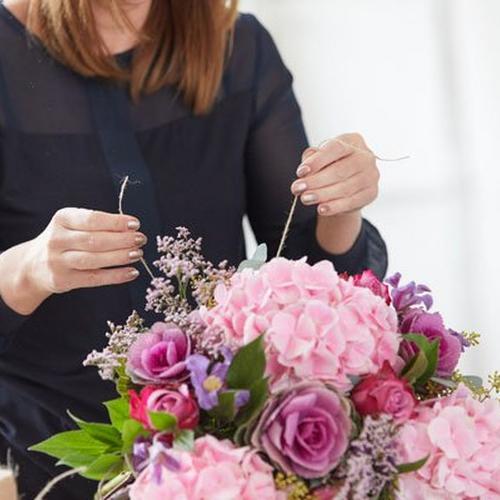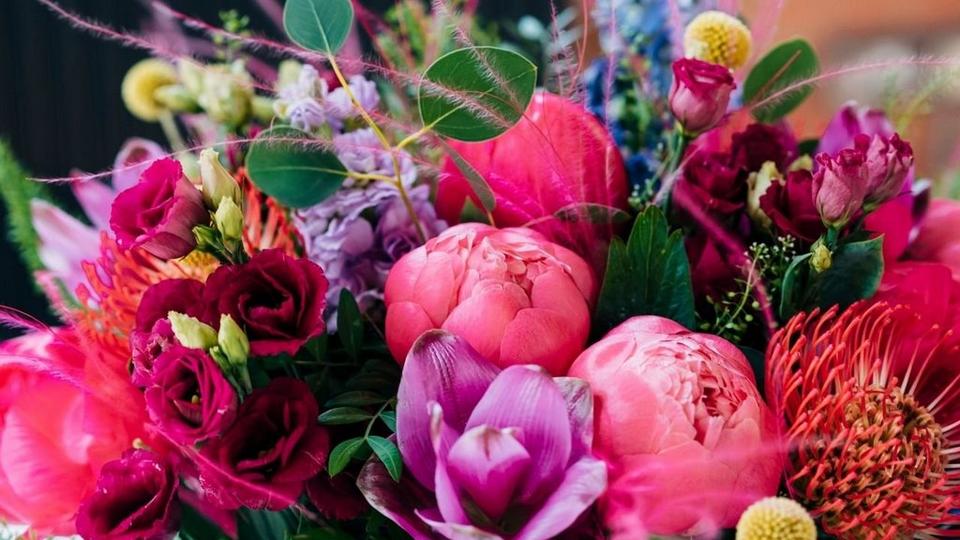The Ultimate Guide to Snapdragons

A favourite with florists and cut flower fans, the snapdragon has been around since the dawn of the Roman era (yes, really). And with its endless range of vibrant colours, whimsical charm and easy-to-care-for nature, we can see how it’s stood the test of time. In this ultimate guide to snapdragons, we’ll delve into how to grow them, which varieties to pick, the symbolism behind them and, of course, how they got their name.
An introduction to the Snapdragon
While best known as the snapdragon, their botanical name is actually Antirrhinum – literally translated as 'like a nose’ (‘anti’ meaning ‘like’ and ‘rhin’ meaning ‘nose’). Their more common name comes from being able to pinch their nose-shaped flowers open, resembling a dragon’s mouth opening and snapping shut.
Today snapdragons grow happily in flower beds, English hedgerows and cottage gardens all over the UK, a long way from their Mediterranean origins. Each plant will usually produce around seven to eight spikes of brightly coloured blooms every year, so gardeners get a lot from a relatively little plant.
Snapdragon meaning and symbolism
When it comes to symbolism, the snapdragon flower is a tale of two sides. On one side, they’re said to symbolise strength and grace reflected in their tall, strong stems, bountiful dragon-faced blooms and half-hardiness to colder temperatures. On the other, many believe they represent deception and deviousness. This might be down to their quick-snapping flowers, or it could be traced back to the Victorian belief that hiding a snapdragon somewhere on you (like in your pocket) made you more charming. As we mentioned before, they were also significant in Ancient Rome, with the Romans believing snapdragons could ward off witchcraft and evil charms.
If that wasn’t enough symbolism for you, each shade has its own significance too – from red blooms that represent courage to yellow for joy and happiness, and orange for positive energy.
Snapdragon facts
- Snapdragon plants can be grown as either annuals or (short-lived) perennials. Annuals will be here for a year, but perennials will come back each year. There’s some debate on whether snapdragons are truly perennial and that maybe their year-after-year return is down to the plant’s self-seeding (dropping their seeds on the ground after flowering).
- Snapdragons are big with bees. They’re a great source of pollen, and while snapdragons have evolved to keep most insects out, bees know exactly how to land on the bottom lip of the flower to force it open.
- The snapdragon has picked up a few other names throughout the years. Some of our favourites include rabbit’s mouth, lion’s mouth, lion’s snap and even toad’s mouth.
- You can eat some snapdragon flowers, although they supposedly have quite a bitter taste! Look out for edible varieties when buying seeds.
Snapdragons come in all shapes – from dwarf to medium, and most commonly, tall. Their flowers also vary, with double types showing off a more open, blousy bloom to the single style that can be pinched open.
Antirrhinum Majus, ‘Majus’ meaning ‘large’, is one of the most widely grown species of snapdragon. These make great cut flowers which can last up to two weeks. There are lots (and lots) of varieties within this species, but here are a few of our favourites:
Antirrhinum Majus ‘Chantilly’
Antirrhinum Majus ‘Appleblossom’
Antirrhinum Majus ‘Cinderella’
When to plant Snapdragons
Sow snapdragon seeds in autumn or early spring. Once they’ve germinated (meaning the seedlings have popped up) and are big enough to gently handle, transfer them to a bigger pot or tray and leave them to grow on somewhere warm and sheltered. When there’s no chance of frost, plant your snapdragons in the ground – same goes if you buy them as plants.
For even more info (especially on growing snapdragons from seed), we love this handy guide from Gardeners’ World
How to care for Snapdragons
Where to put snapdragons
Snapdragons like a sunny spot, but they also do well in part shade. When planting them in the ground, make sure your soil is well-drained, as their roots are prone to rotting if it’s too wet. To test how well your soil drains, dig a hole around 30cm and fill it with water. If most of the water drains away within 10 minutes, your snapdragons should be happy there. Space your snapdragons out, around 6 to 12 inches apart if you can.
How often to water snapdragons
Keep seedlings and young plants well watered while they’re growing. Water every few days or when the top inch or so of the soil starts to look and feel dry (sticking your finger in the soil is a good way to test how wet it is). It’s best to water lightly and more often than heavily and less frequently. Once your plants are bigger and in the ground, water them a few times a week or more often during sunny, dry spells.
Feeding
As soon as your snapdragons start flowering, feed them with a potash-rich fertiliser each week like Tomorite (which you can find in most garden centres). This will encourage them to keep blooming for longer.
Deadheading
Deadheading just means removing the dead flower heads so that new ones can pop up. To do this, snip off the top 5 to 8cm of the stem where there are dead flowers, cutting above any side shoots that have started to form. If you deadhead often, you’re likely to get more flowers for a longer time. Win-win.
When do Snapdragons bloom?


Creating a Snapdragon bouquet





%20(1).jpg?$poi-square$&fmt=auto&qlt=default&fmt.jp2.qlt=60&bg=%23FECCA7&w=960&aspect=16%3A9)

-PUBLISHED.jpg?$poi-square$&fmt=auto&qlt=default&fmt.jp2.qlt=60&bg=%23FFCBDB&w=960&aspect=16%3A9)